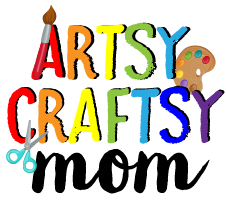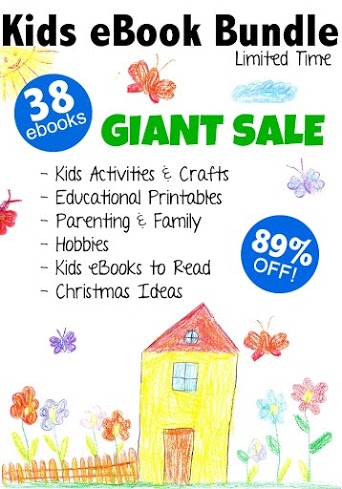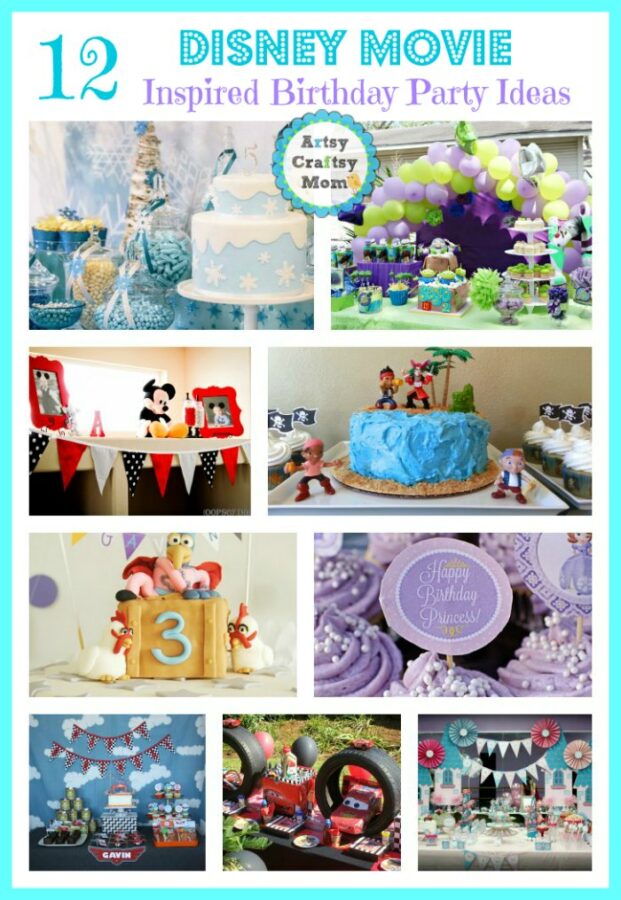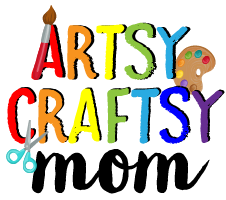9 MEANINGFUL NATIVE AMERICAN CRAFTS FOR KIDS
9 Meaningful Native American Crafts for Kids as told by a Native Person. Fun Crafts, Books & Resources to explore Native Culture without cultural appropriation
Making crafts can be a great hands-on way to learn about Native American people. In fact, if you live in North America, Canada, or Central America, it is almost certain that you are in the ancestral homeland of a once-vital and important Native American tribe.
Many of the names of cities towns, rivers, and mountains around you may come from an original Indigenous tongue and this can be a great way to discover more about where you live and how you can make a meaningful connection to the Native people of your region.
Native American cultures are so diverse
One of the first things you’ll notice once you start learning about Native cultures is that they are so diverse. The Seminole Indians of Floride lived in swampy everglades. The Lenape of Pennsylvania lived in the forests and meadows of the Northeast. The Lakota, Dakota, and Nakota lived alongside the buffalo on the wide expansive Plains.
Other tribes across the country lived in deserts, mountains, by the great lakes, or even in the snowy and icy northern regions. Given those different conditions, you can expect that the items that were part of their daily life were quite different. We’ve selected a variety of fun and easy crafts below so you can see a wide range of cultural traditions and do some hands-on crafting at the same time!
How to know what Indigenous lands you’re living on?
Do you know who lived in the region you call home? If you don’t, you can easily google a phrase such as “which Native American tribe lived near Salt Lake City”. Once you discover which tribe called your region home, you can google phrases like “Is there a museum of Navajo culture?”. During the search, you will probably discover some great resources and develop a new respect for the tribe that lived in your area. But don’t stop there…
Now, let’s explore some crafts!
9 MEANINGFUL NATIVE AMERICAN CRAFTS FOR KIDS
1. NATIVE INSPIRED WEAVING PROJECTS

Weaving played a part in the creation of so much of the beautiful regalia and clothing associated with almost every Native American tribe. For that reason, young children learned this skill very early with simple projects that honed their skills. As they grew older, they might create belts, rugs, carrying bags or other clothing items. This post has wonderful examples of basic projects you can try that come from many diverse Native American tribes.
2. WAMPUM BELTS

Wampum was the first original currency of what is now the United States. Traditionally made of two types of shells, it was used for storytelling purposes, as ceremonial gifts, to record peace treaties, and as a method of exchange. Making your own version of a wampum belt is a great way to learn about the Seneca, Cayuga, Mohawk, Onondaga, Oneida, and Tuscarora peoples, sometimes known as the Iroquois Confederacy.
3. DRUM BEATER CRAFT

Drums, rattle, and music played a huge part in the lives of all Native American tribes. Drums used might range from small hand drums to water drums to large frame drums. Aside from drums that one person would play, there were also group drums, such as pow-wow drums that brought many drummers together to play. Many of these drums were played by using a stick or a beater and this craft gives you different ways you can create a beater for playing any drum of your choice.
4. PAPER MACHE RATTLE

Rattles also can be found in almost every Native American tribe. They can be heard in personal or ceremonial music as well as social and celebrational music. As you can imagine, each tribe made rattles out of objects that were readily available, like dried gourds. Some of the more unusual Native American rattles were made of items such as salt and pepper shakers and the toenails of deer. This craft shows you how to make your own version of a Native American rattle out of paper mache.
5. CHEROKEE RATTLE CRAFT

The Cherokee people have many distinctive rattles. Here is a craft that lets you experiment with objects that create sound and make your own rattle in the same way.
6. TALKING STICK – The Talking Feather: A Powerful Tool For Learning To Listen – Multicultural Kid Blogs

Did you know that most Native groups made decisions by consensus, not by “majority rules”? For this to work, people must learn to be good listeners and to be quiet when another is speaking. Using a talking stick (or stone, or shell or object) is a beautiful tradition that helps people develop this important skill. Making your own talking item can be both fun and useful craft.
7. KACHINA DOLLS

Even if you didn’t know their name, you’d probably recognize a kachina doll from the Native American tribes of the Southwestern United States. A kachina is a depiction of an ancestral spirit and can be represented by an actual dancer or by a kachina doll. Some are pretty, some are scary, but they are meant to teach kids about important beliefs held by the tribe and passed on from generation to generation. Some of the icons represented by kachinas and kachina dolls are the singer, the buffalo, the badger, the ogre, the hunter, the rainbow, the eagle, and the sun. You can find kachina dancers and rites in the Hopi, Zuni, Hopi-Tewa, and most of the Pueblo tribes of New Mexico.
8. NATIVE AMERICAN PAINTED BUFFALO HIDES

Painted buffalo hides were an important part of Native American culture on the great plains of the United States. Buffalo hides were often worn for daily clothing but special ones were created and painted beautifully for special or ceremonial purposes. Sometimes a buffalo hide with special images was worn for healing or for help with childbirth. Social and political leaders would have unique and beautiful painted buffalo hide that they would wear. If you were to pick out images that mean the most to you, what do you paint on your buffalo hide? This craft gives you the opportunity to create your own.
9. TOTEM POLES

Totem poles are one of the most iconic images from Native and First peoples on the Pacific Northwest. Sometimes soaring up to 40 feet in height, they tell of ancestry, the lives of specific people, or detail important historical events. Each pole is adorned with images of beings or animals such as ravens, killer whales, eagles, thunderbirds, beavers, bears, wolves, and even frogs. Totem poles served several purposes including as territory markers, welcome signs and to remind people of great deeds or great times.
Keep Exploring And Connecting
Here are some helpful resources so you continue to explore and learn:
Books for Kids about native people by native people
Can you imagine being in a room and having people talk about you but not including you? That is how many Native American people feel when they are excluded from the very books and stories that tell their history or exploit their culture. One way to reverse this disrespectful trend is to look for books or websites that are about Native people written by Native people. In those books and websites, you’ll find a more authentic and respectful portrayal of what it means to be a member of a Native American tribe.
Books By Cherokee Author, Traci Sorrel
Monique Smith Grey – Canadian Native American Author

My Heart Fills With Happiness
Purchase From Amazon: https://amzn.to/37SY6ui
By Haida Author, Sondra Segundo
Killer Whale Eyes Author

Books By Inuit Author And Singer, Celina Kalluk

Sweetest Kulu
Purchase From Amazon: https://amzn.to/3gceVoG
What is National Native American Day?
Native American Day is a holiday celebrated across the United States in lieu of Columbus Day. Within each of these states, Native American Day honors the cultural contributions of Native American communities to the respective state’s history, as well as to the overall country.
When is National Native American Day?
In California and Nevada, the holiday is celebrated on the fourth Friday of September (25th Sept 2020), whereas in South Dakota and Wisconsin, it falls on the second Monday of October (12th October 2020).
Suggested Further Reading
The National Museum of The American Indian
https://americanindian.si.edu
8 Native American Museums You Can Visit Online
http://www.tinytappingtoes.
https://www.powwows.com/
Crazy Crow Native American Trading Post (Craft Supplies, Books and More)
https://www.crazycrow.com/
Meet Our Guest Blogger – DARIA | WORLD MUSIC FOR CHILDREN









![The Best 60 Chinese New Year Crafts and Activities for Kids [Updated for 2024] 18 A Chinese New Year’s Eve party with kids can actually be a lot of fun. But you need to prepare for it: We have the Best 60 Chinese New Year Crafts and activities for kids to celebrate the year of the Rabbit 2023](https://artsycraftsymom.com/content/uploads/2020/01/Chinese-New-Year-Crafts-1-630x900.jpg)






[…] 9 Native American Crafts for Kids – Artsy … – 9 Native American Crafts for Kids. Kindergarten, preschool, and elementary school crafts. Teepee, kachina dolls, headdress, rainstick, totem poles and more […]
I would ask that you reconsider these crafts. Native American art is not to be trivialized by being made from recycling, nor should it be seen as a way to keep children busy. If you are wanting children to learn about First Nations people – as they should – it needs to be done in a matter that does not promote colonialism. By stating that “Pilgrims met the helpful Native Americans (Indians) and give them food and showed them the different farming techniques,” it makes the First Nations people appear to be helpless and shows the pilgrims as having saved them. This is far from the truth. Yes the First Nations people were helpful – that is because the settlers would have died without them. By teaching children about colonialism in this manner, it only perpetuates the idea that colonialism was not a bad thing and it makes no space for reconciliation. This comment is not meant as an attack as I am sure there was no mal intent, but it is important to look at the impact of crafts such as these.
Thank you for your comment. I am from a country that faced similar colonization, and it sure comes across as being insensitive. You have my sincere apologies and a promise that my team will go over the wordings and change a few things for sure.
I completely agree with Sara above. As a children’ librarian it is important to get materials from authoritative sources. In this case are the reading books written by Native Peoples or in consultation with Native Peoples? Do the stories reflect Native Peoples in current/present times and not in the past or stereo typical roles.. Are the crafts respectful and reflective of Indigenous People? The head dress is an important item used for ceremonial purposes. It is similar to making a craft from a traditional religious relic from another religion. These are important things to know and consider as a projector of information. Therefore for your own edification and that of your followers, here is a link to an authoritative source on American Indian Children’s Books to replace most of your “Suggested Reading” materials. https://americanindiansinchildrensliterature.blogspot.com/
You have found so many fun Native American craft ideas!
I can’t wait to try a few of these with my kids this year.
These crafts are extremely insensitive and are an innacurate way of teaching about Native culture. These depictions of Native American culture are inaccurate in that they lump together different cultures, giving children the impression that there is only one culture. Acknowledging these settler perspectives rationalize and maintain oppressive social structures. It also focuses on how Native Americans lived in the past and does not acknowledge current Native ways of life. These crafts reinforce dangerous, offensive, and inaccurate stereotypes onto children that they will carry with them. Many of these crafts as well as feathers are considered sacred in Native American culture, and using them in children’s crafts is offensive.
These crafts and this lesson teach a sanitized version of Thanksgiving. While young children should not necessarily be taught about the immense violence, extermination, and enslavement of Native people at the hands of the colonizers, they should not be told lies.
These crafts perpetuate the idea that Native Americans only lived in the past and that they are exotic and warlike. The focus on tipis as being where the majority of Native people live/d is incorrect and reinforces this idea of Native people only living in the past. They contribute to warmly and further enforce the idea that all Native people are one homogenous group.
“Changing a few things” does not make this at all acceptable. Native people have suffered immensely as a result of settler colonialism and engraining stereotypical ideas of what it means to be Native American into young children is harmful to their growth and to Native people. Mainstream educational research and crafts like these erase and conceal the erasure of Indigenous peoples within the settler colonial nation-state.
I agree with everyone who finds the crafts to be an inappropriate way to teach children about the indigenous people of North America. Please do some research and reconsider.
I have read the comments here and I disagree. These ARE CRAFTS FOR CHILDREN. These crafts are a tool to help children become familiar with other customs and traditions. A tool to help children imagine people who live with a different history. These are not some kind of neurotic social bash of hate crafts. These are crafts full of color and excitement FOR CHILDREN. The headdress is beautiful. A child who makes these crafts will (with proper history) develop respect and admiration for cultural differences.
These crafts are teaching a false history and belittlement of Native peoples. No one goes around making papermache Jesus on the cross during Easter…. why make paper plate dream catchers? This isn’t admiration of a culture its unwillingness to learn the truth. As a Native person I promise you any native person who still participates in their culture is offended by this. This is not suitable for children, please don’t encourage this behavior.
I agree with Cara. I teach at an elementary school with a large number of Native American students, and as the Art teacher, it’s a joy to create projects that celebrate their culture and history.
Yikes. sad to see it is 2021 and you still have this post up. Would you have kids make crosses to celebrate Christians? How about having a kid dress up like a sahdu to celebrate Indian culture? Dream Catchers and regalia that you call “headdresses”are a spiritual objects not a kid’s craft. There are way you do crafts inspired by the many many different nations and band of indigenous people of North and South America but almost everything you have listened is based in stereotypes and cliches and a willful ignorance since this has been up for so long. Please remove this post.
We at team Artsycraftsymom are really sorry for the earlier culturally inappropriate content.
I have gone ahead and changed the entire post with the help of DARIA (Daria Marmaluk-Hajioannou)
Please let me know if you have any feedback.
I am a preschool teacher in Massachusetts looking for ways to help my students understand First Nations culture, particularly those that exist on the east coast. I can see from the reactions to this post that this is no simple undertaking. I wonder if any of the commenters have suggestions on how we can help our children learn about these cultures appropriately…
Thank you
Hi Anna, thanks for asking. You can connect with the author of this post – DARIA (Daria Marmaluk-Hajioannou) who is a Native American and an educator herself.
She would be able to guide you ?
from everything i have read, using feathers and making totem poles isnt cool. native americans dont want to be taught about in shallow ways it reinforces stereotypes. i would say that continuing to have this content out there is probably not the best, it just confuses teachers. i would erase this page completely, many of these crafts dont center getting deep into the meaning of the content, and it seems that you really dont want to do anything on a surface level or treat cultural iconography or tradition in a manner of ‘craft’, you know what i mean? this continues to be the first thing that pops up on google when i google curriculum for native american heritage month and i know it generates revenue for you, but the ideas here are just not sound. deep learning or nothing.
Hi, Thanks for the feedback. You can connect with the author of this post – DARIA (Daria Marmaluk-Hajioannou) who is a Native American and an educator herself.